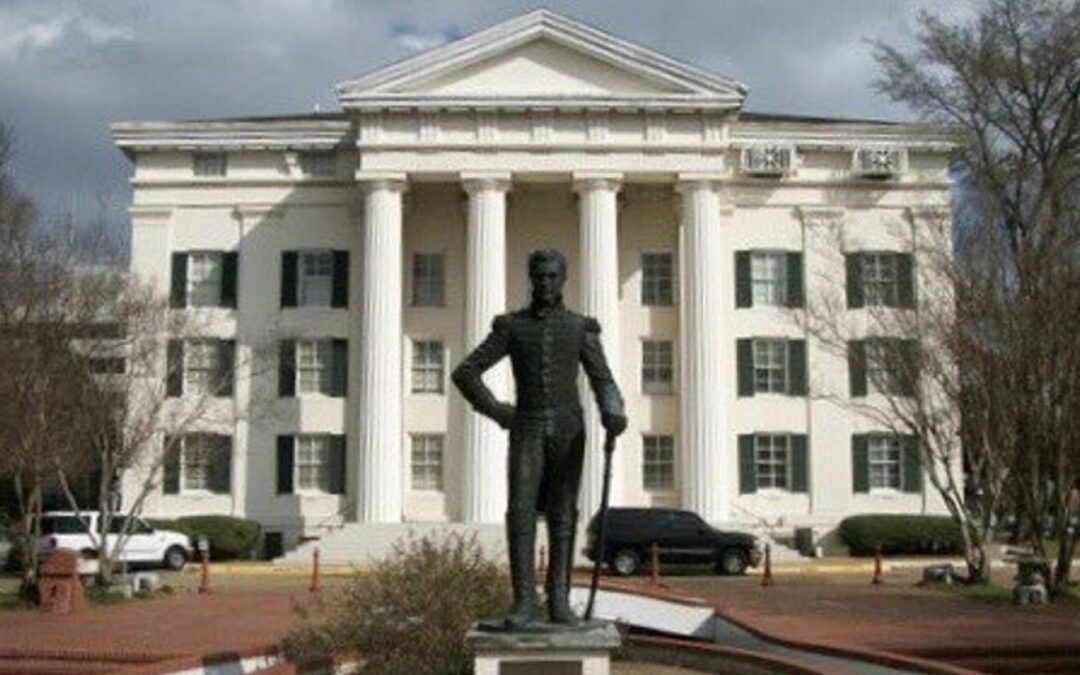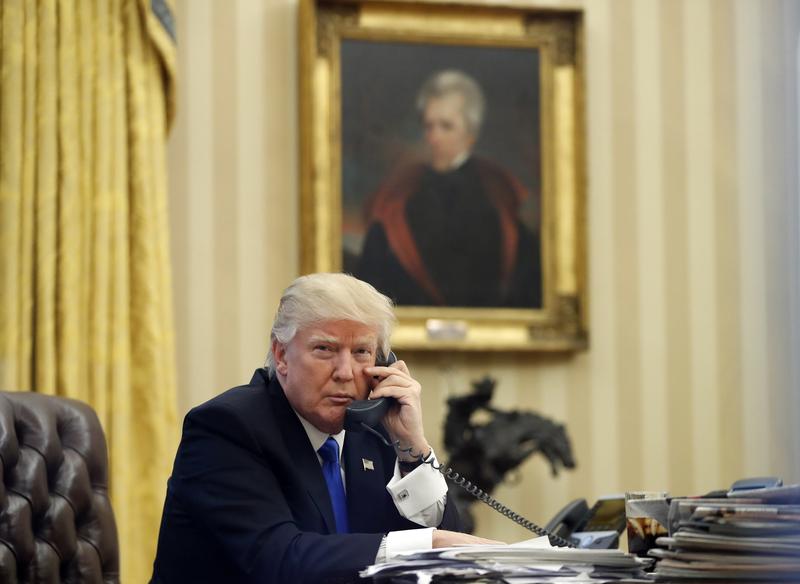Jackson, Miss., the state capital named after Andrew Jackson, voted yesterday to remove the former president’s statue from the grounds of City Hall.
The 5-to-1 vote by the city council to relocate the statue underscored how cities are confronting the legacies of slave-owning presidents amid a national reckoning on racism.
Mayor Chokwe Antar Lumumba (D) said it was time to “divorce” the city “from the legacy of a brutal owner of enslaved people who was instrumental in initiating the Trail of Tears against indigenous people. ”
“While removing a statue does little to change our condition as oppressed people, we should not have to constantly encounter the likenesses of those who profited off of the blood, sweat, & despair of our ancestors or see them immortalized as honorable,” Lumumba, who is black, said in a statement.
Statues of Jackson have been the target of protests across the country, in Jacksonville, Fla., New Orleans and, most notably, Washington’s Lafayette Square, where an equestrian statue celebrates Jackson’s victory against the British in the Battle of New Orleans in 1815.
The U.S. Park Police thwarted an attempt by protesters to pull it down with a rope last month.
President Trump — who has called Jackson his hero, hung his portrait in the Oval Office and compared himself to the fellow populist — was incensed and called for criminal charges against those vandalizing any monuments.
Four people have been charged with destruction of federal property in the Lafayette Square case.
In Jacksonville, also a Jackson namesake city, one protester was arrested and charged with spray painting “slave owner” on a Jackson statue, a replica of the one in Lafayette Square.
But while protesters have taken matters into their own hands in some cases, in Jackson, Miss., it was a city council member, Kenneth Stokes, who proposed removing Jackson’s statue.
Dedicated in 1972, the bronze statue’s plaque honors Jackson as a “soldier, statesman and 7th president of the United States.”
The mayor and city council intend to relocate the statue, possibly to a museum.
Lumumba said that the name Jackson, which is based on the name John, means “God has shown favor,” and hopes that the Mississippi capital can “reclaim the name of our city for that meaning.”
Jackson, a liberal city in the red state, is about 82 percent black.
“Black people have reclaimed and repurposed names given to our families by slave owners for centuries,” he said. “This is no different. ”
In cities where protesters have targeted his likeness, Jackson’s legacy of brutality toward both Native Americans and enslaved people has come into sharp focus.
Jackson owned roughly 150 slaves on his Tennessee plantation at the time of his death in 1845, according to the Hermitage.
He also took a number of those slaves to work at the White House, even purchasing more while in office, according to the White House Historical Association.
In addition to profiting enormously from the slavery economy, Jackson has the distinction of being the only U.S. president believed to have personally driven slaves in a slave coffle, according to the book “The American Slave Coast: A History of the Slave-Breeding Industry” by Ned and Constance Sublette.
In a coffle, a line of enslaved people were tied or chained together by the neck or hands and forced to walk, sometimes for hundreds of miles between plantations or slave markets.
In an infamous 1811 anecdote, Jackson was driving one such slave coffle in Tennessee, when a federal agent stopped him to ask for his ownership papers, according to the book “The End of the Myth: From the Frontier to the Border Wall in the Mind of America” by Greg Grandin.
Jackson was so offended about being questioned in front of his slaves that he led a successful campaign to get the agent removed from office.
“My God, is it come to this?” he wrote in one letter, believing the incident was an affront to the “bravery and blood of our forefathers,” according to Grandin’s book.
While leading the Tennessee militia and serving as a U.S. general, Jackson led military campaigns of terror against the Creek Nation, the Florida Seminoles and the Chickasaw in Tennessee and Alabama — winning all of them, driving Native Americans into desperation.
He burned their villages, enslaved the women and children and instructed his soldiers to cut off the noses of dead Native American warriors to tally the dead, according to “The End of the Myth.”
Riding the wave of his brutal military successes through the election and into the Oval Office, Jackson continued in 1830 with the mass expulsion of Native Americans from their lands through the Indian Removal Act, in which thousands died on the Trail of Tears.
At the base of Jackson’s statue in Lafayette Square in Washington, one protester scrawled the word “killer” in black paint.
Del. Eleanor Holmes Norton (D), the District’s nonvoting delegate in Congress, introduced legislation earlier this month to remove Jackson’s statue from the park and put it in a museum.
“The statue of slave owner Andrew Jackson in Lafayette Park, a former slave market, adds insult to injury,” Norton wrote on Twitter last month. “It’s well past time we move on from this painful chapter in our nation’s capital. ”

